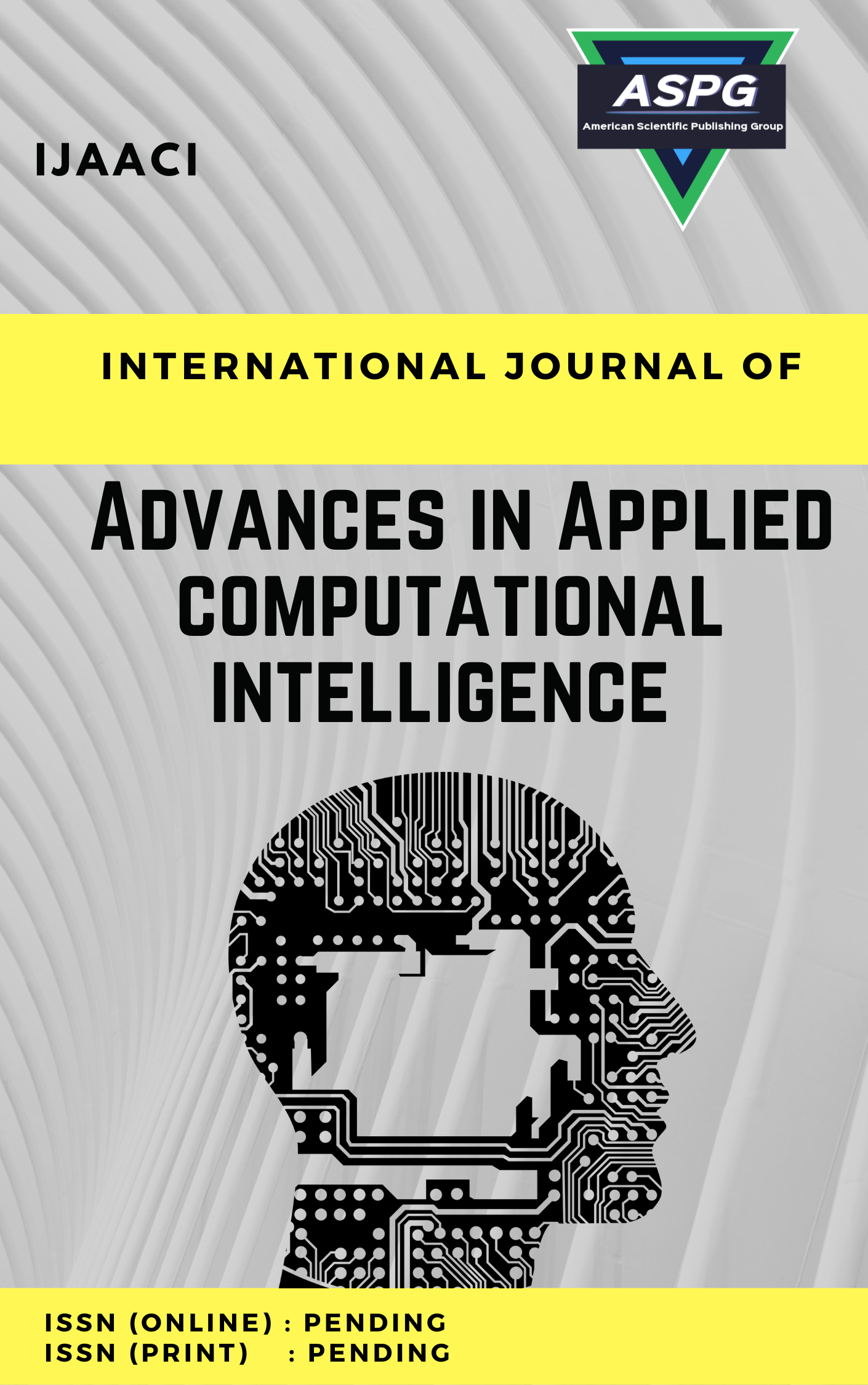

Volume 2 , Issue 1 , PP: 15-22, 2022 | Cite this article as | XML | Html | PDF | Full Length Article
Shereen Zaki 1 * , Mahmoud M. Ibrahim 2 , Mahmoud M. Ismail 3
Doi: https://doi.org/10.54216/IJAACI.020102
In order to remain competitive, businesses must now invest in developing environmentally responsible green suppliers. The purpose of this article is to determine which vendors should be incorporated into green supplier growth programs in order to enhance their ecological sustainability, as well as the suppliers' current green/environmental efficiency. Factor evaluation was used to examine the reliability of the parameters used to assess green suppliers' efficiency and overall quality. To determine which provider offers the greatest ecological performance, the suggested technique uses a hybrid interval-valued neutrosophic set (IVNS) and VIKOR structure to assign relative importance to each criterion. To manage ambiguity while choosing choices, we combine the neutrosophic method with the VIKOR technique. We used 10 criteria and ten vendors in this research to demonstrate the usefulness and effectiveness of the suggested framework. The suggested methodology is applied in the application.
Green Supplier , Supply Chain , VIKOR , Interval Valued Neutrosophic Set , MCDM0
[1] K. Govindan, S. Rajendran, J. Sarkis, and P. Murugesan, “Multi criteria decision making approaches for green supplier evaluation and selection: a literature review,” J. Clean. Prod., vol. 98, pp. 66–83, 2015.
[2] B. M. Dos Santos, L. P. Godoy, and L. M. S. Campos, “Performance evaluation of green suppliers using entropy-TOPSIS-F,” J. Clean. Prod., vol. 207, pp. 498–509, 2019.
[3] S. H. Hashemi, A. Karimi, and M. Tavana, “An integrated green supplier selection approach with analytic network process and improved Grey relational analysis,” Int. J. Prod. Econ., vol. 159, pp. 178–191, 2015.
[4] S. A. S. Haeri and J. Rezaei, “A grey-based green supplier selection model for uncertain environments,” J. Clean. Prod., vol. 221, pp. 768–784, 2019.
[5] H.-W. Lo, J. J. H. Liou, H.-S. Wang, and Y.-S. Tsai, “An integrated model for solving problems in green supplier selection and order allocation,” J. Clean. Prod., vol. 190, pp. 339–352, 2018.
[6] A. Awasthi and G. Kannan, “Green supplier development program selection using NGT and VIKOR under fuzzy environment,” Comput. Ind. Eng., vol. 91, pp. 100–108, 2016.
[7] K.-Q. Wang, H.-C. Liu, L. Liu, and J. Huang, “Green supplier evaluation and selection using cloud model theory and the QUALIFLEX method,” Sustainability, vol. 9, no. 5, p. 688, 2017.
[8] K. Chatterjee, D. Pamucar, and E. K. Zavadskas, “Evaluating the performance of suppliers based on using the R’AMATEL-MAIRCA method for green supply chain implementation in electronics industry,” J. Clean. Prod., vol. 184, pp. 101–129, 2018.
[9] M. Yazdani, S. Hashemkhani Zolfani, and E. K. Zavadskas, “New integration of MCDM methods and QFD in the selection of green suppliers,” J. Bus. Econ. Manag., vol. 17, no. 6, pp. 1097–1113, 2016.
[10] N. Banaeian, H. Mobli, B. Fahimnia, I. E. Nielsen, and M. Omid, “Green supplier selection using fuzzy group decision making methods: A case study from the agri-food industry,” Comput. Oper. Res., vol. 89, pp. 337–347, 2018.
[11] S. Gupta, U. Soni, and G. Kumar, “Green supplier selection using multi-criterion decision making under fuzzy environment: A case study in automotive industry,” Comput. Ind. Eng., vol. 136, pp. 663–680, 2019.
[12] H. Pouresmaeil, E. Shivanian, E. Khorram, and H. S. Fathabadi, “An extended method using TOPSIS and VIKOR for multiple attribute decision making with multiple decision makers and single valued neutrosophic numbers,” Adv. Appl. Stat, vol. 50, pp. 261–292, 2017.
[13] G. Wei et al., “VIKOR method for multiple criteria group decision making under 2-tuple linguistic neutrosophic environment,” Econ. Res. istraživanja, vol. 33, no. 1, pp. 3185–3208, 2020.
[14] X. Wang, Y. Geng, P. Yao, and M. Yang, “Multiple attribute group decision making approach based on extended VIKOR and linguistic neutrosophic Set,” J. Intell. Fuzzy Syst., vol. 36, no. 1, pp. 149–160, 2019.
[15] S. Pramanik, S. Dalapati, S. Alam, and T. K. Roy, “VIKOR based MAGDM strategy under bipolar neutrosophic set environment,” Neutrosophic Sets Syst., vol. 19, pp. 57–69, 2018.
[16] N. L. A. M. Kamal, L. Abdullah, F. M. Yee, I. Abdullah, and N. Vafaei, “Single Valued Neutrosophic VIKOR and Its Application to Wastewater Treatment Selection.,” Neutrosophic Sets Syst., vol. 47, 2021.
[17] Y.-H. Huang, G.-W. Wei, and C. Wei, “VIKOR method for interval neutrosophic multiple attribute group decision-making,” Information, vol. 8, no. 4, p. 144, 2017.
[18] S. Pramanik and R. Mallick, “VIKOR based MAGDM strategy with trapezoidal neutrosophic numbers,” Neutrosophic Sets Syst., vol. 22, pp. 118–129, 2018.
[19] J. Hu, L. Pan, and X. Chen, “An interval neutrosophic projection-based VIKOR method for selecting doctors,” Cognit. Comput., vol. 9, pp. 801–816, 2017.
[20] S. Pramanik, S. Dalapati, S. Alam, and T. K. Roy, “NC-VIKOR based MAGDM strategy under neutrosophic cubic set environment,” Neutrosophic Sets Syst., vol. 20, no. 1, pp. 95–108, 2018.
[21] H. Eroğlu and R. Şahin, “A neutrosophic VIKOR method-based decision-making with an improved distance measure and score function: case study of selection for renewable energy alternatives,” Cognit. Comput., vol. 12, no. 6, pp. 1338–1355, 2020.
[22] J. Wang, G. Wei, and M. Lu, “An extended VIKOR method for multiple criteria group decision making with triangular fuzzy neutrosophic numbers,” Symmetry (Basel)., vol. 10, no. 10, p. 497, 2018.
[23] S. A. I. Hussain, S. P. Mondal, and U. K. Mandal, “VIKOR method for decision making problems in interval valued neutrosophic environment,” in Fuzzy multi-criteria decision-making using neutrosophic sets, Springer, 2018, pp. 587–602.